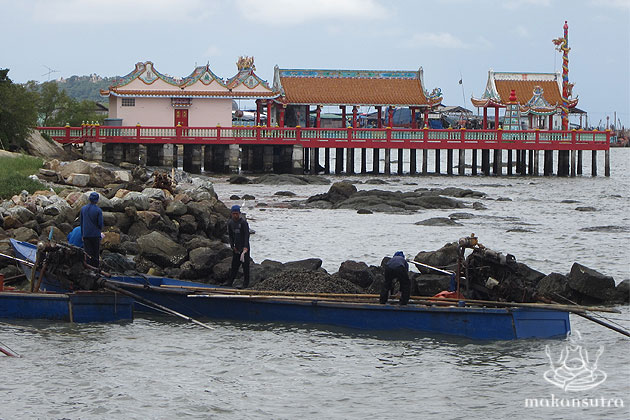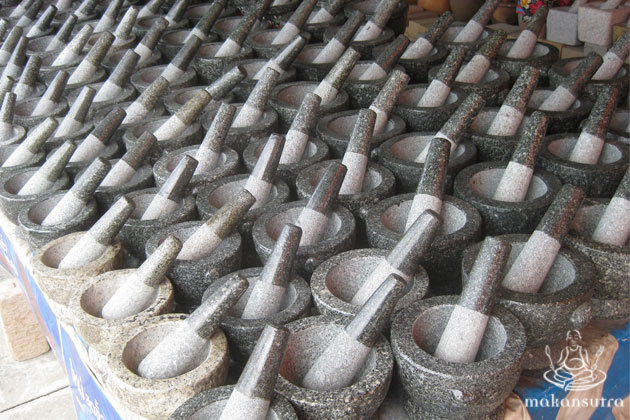
Ang Sila, Pattaya: Of mortars, pestles and Seafood
By Thammika Songkaeo - Tuesday, Nov 25, 2014
Say “Pattaya” to most people in the world, they will think sleasze, drugs and alcohol. But to some Thai foodies, it’s about, “Ang Sila”. Ang what, you say? “Ang” indicates a deep bowl or tub and “sila” means “stone”. It’s also the name of a little town about half an hour drive from Pattaya which, as you guessed, is the go-to place for stoneware for Thai people. Recently, people have been coming specifically for the mortars and pestles. It’s not just the quality of the mortars and pestles that draw the customers. It’s also the creativity of the makers, who include cute and sweet designs which make mortars and pestles a decorative item too. Ang Sila is worth that 30 minute detour in your next trip to Pattaya.

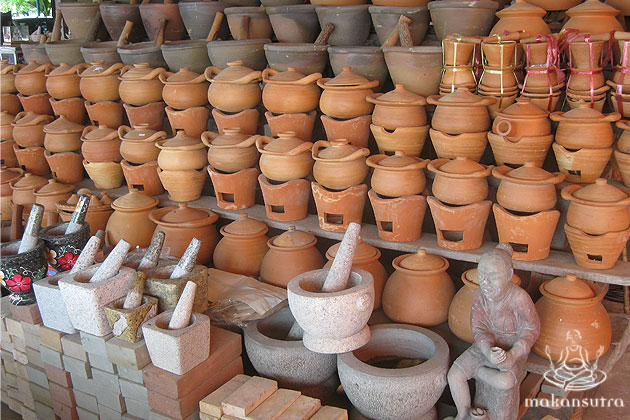
Originally, the stone used for Ang Sila mortars and pestles were local stones that boasted a brown hue, but nowadays, nature’s stock is depleted and many quarries there have shuttered down. A shop owner explains that shops now boast the commonly seen blackish-grey stoneware, which uses the stones from Trat, another southern Thailand province, but they assemble it in Ang Sila, since the people there are experts in moulding them. You’ll still be able to find the brown hued Ang Sila stone mortars and pestles, but those can be about four or five times the price of Trat ones. Small Trat-stone mortars range from 150 baht (about SGD$6) to 900 baht (SGD $36). The Hello Kitty and Mickey Mouse design and faces introduce to these pounders, make that 150 baht a good and funky souvenir.
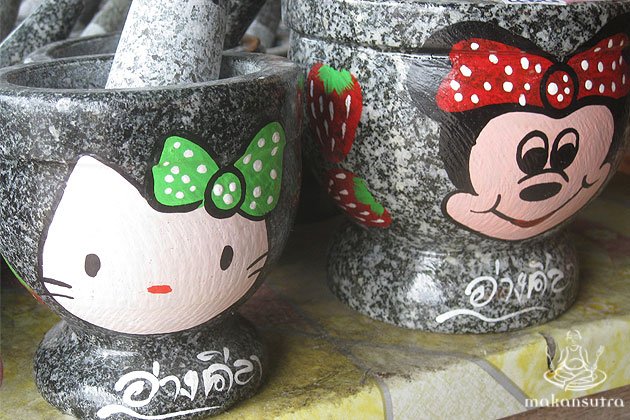
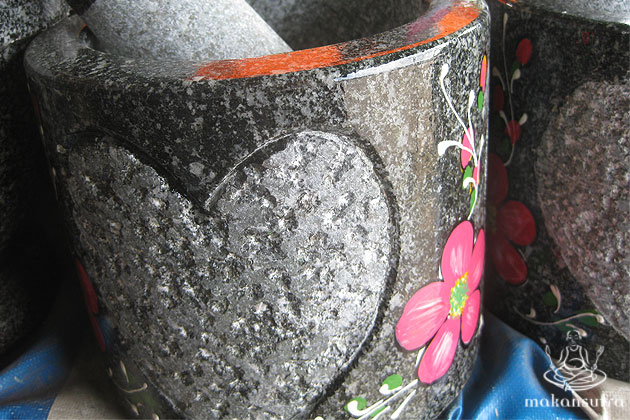
However, Ang Sila isn’t only good for these stone kitchen tools. It’s also a food haven. It’s fresh and lovely Thai style seafood, is unforgivingly spicy and sour, with tons of aromatic herbs and grassy vegetables. Many kitchens here specialize in seafood, they have rarer items that you won’t find in landlocked provinces, like gaeng som with fish roe for about $10. Gaeng som is a spicy and sour, orange-hued, clear-broth soup (unless you get the version with coconut milk, of course) with vegetables and typically fish or omelette, but at Ban Talay restaurant, tucked in a quiet street (address in Thai: 3/1 หมู่ 3 ถนนชลบุรี-อ่างศิลา; address in English: 3/1 Moo 3, Chonburi-Ang Sila Road), it comes with gigantic fish roe that are the almost the size of two M&Ms combined. They taste like bubble tea pearls, except they’re much softer, and more delicate. Ban Talay also boasts crab fried rice (about $6) that is redolent with wok hei, and the crab flavours penetrate through every grain of rice. The restaurant is open daily from 10 a.m. to 10 p.m.
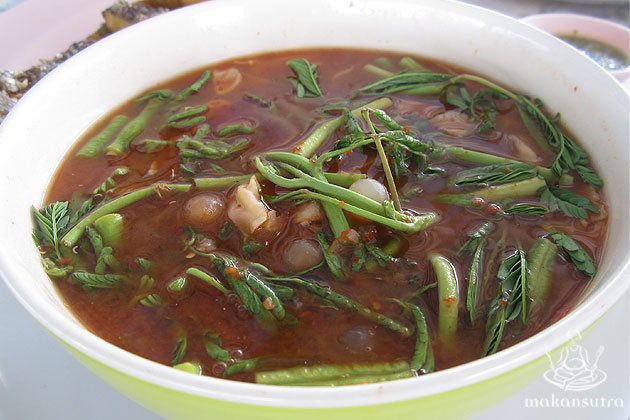
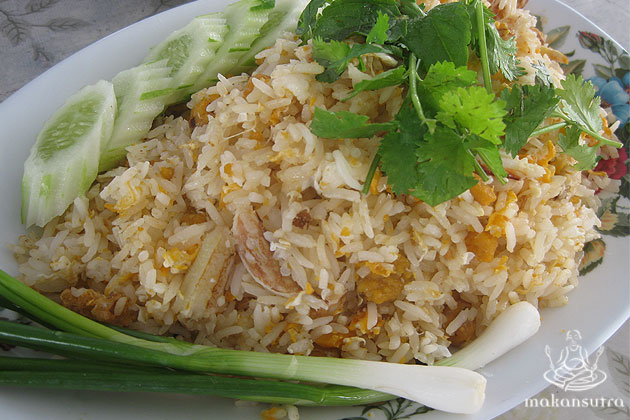
If Pattaya is your next destination following Ang Sila, you’ll also find kao laam vendors along the main stretch from Ang Sila to Pattaya. Kao laam – sweet sticky rice stuffed in bamboo then grilled – comes in both the white and the purple version, the purple sticky rice being a different species of sticky rice. Unlike many sweet desserts, the sweetness of kao laam hits your nostrils, sending a gently sweet cloying sensation all over your face, instead of just on your tongue. The most exciting part is picking your bamboo, for only about $1 a piece, and then watching the vendor hack it open right before you, releasing the aroma of the grilled sticky rice. It’s a multi-sensory street food experience.
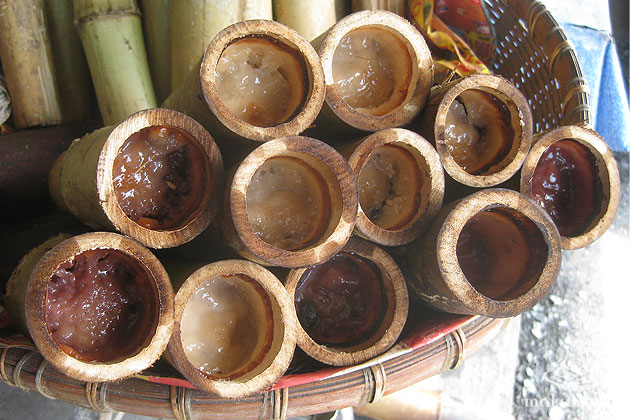
Ang Sila still has more room for tourism development, which makes visiting it soon an entertaining idea. It’slikely that even the Trat stones will not last for much longer…
